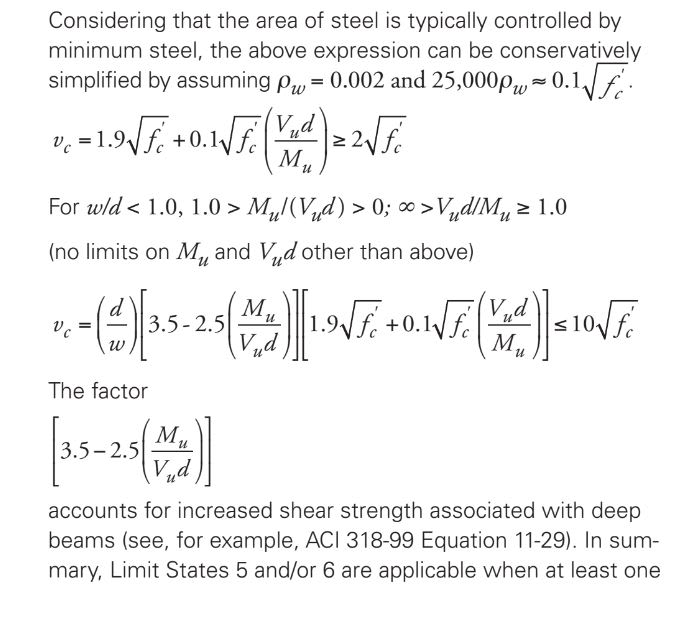Gus14
Civil/Environmental
- Mar 21, 2020
- 194
According to ACI shear design procedure, the shear design value is taken at a distance d from the column face. However, due to demanding architects and owners, I often find myself with high concentrated loads at a distance less than d from the column face causing a huge peak in shear value at distance less than d. I attached a drawing of a beam with a high concentrated load near the support so you could know what I typically deal with. Increasing the beam depth would of course allow the design software to ignore this peak because it's at a distance less than d.
For these cases, do you think I should be designing for the shear value at the column face directly and neglect the effect of increasing the beam effective depth "d"?
For these cases, do you think I should be designing for the shear value at the column face directly and neglect the effect of increasing the beam effective depth "d"?

